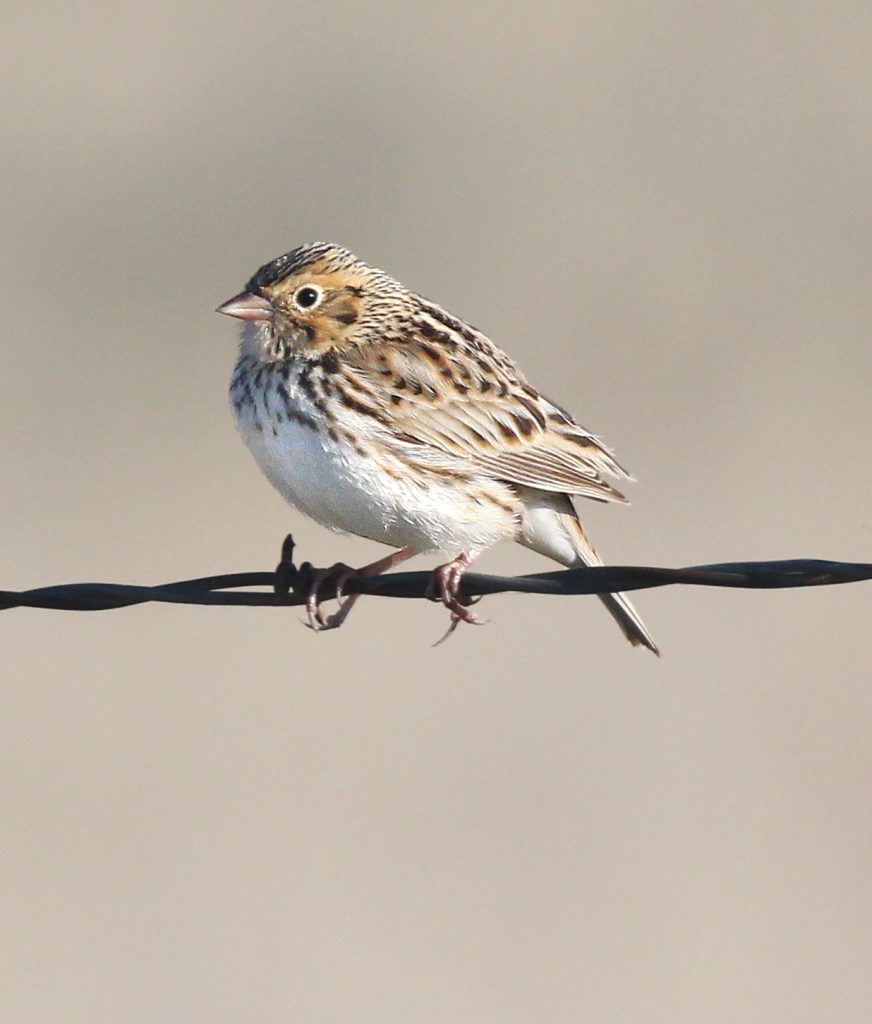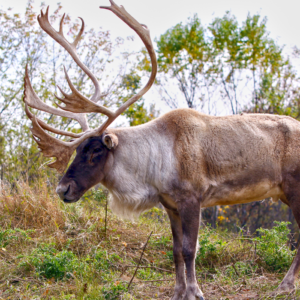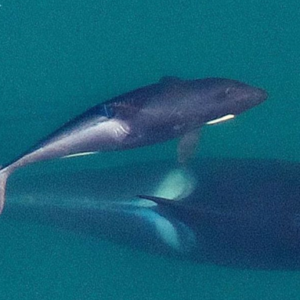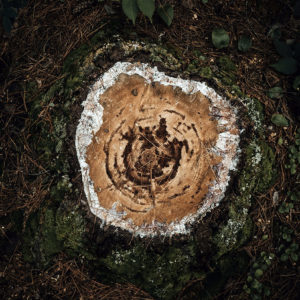Ever Heard of a Baird’s Sparrow?

Sharlene Amalu, Guest Blogger
This blog is written by guest blogger Sharlene Amalu.
No, I’m not talking about a certain sea captain and some pearl; I’m talking about the bird Ammodramus bairdii, also known as the Baird’s Sparrow. The Baird’s Sparrow is believed to only have a lifespan of three to six years and is approximately 12cm in length or slightly larger than the size of your palm. Individuals only sing one song out of a possible thirteen songs through its lifespan. They’re tiny birds that really sing!
Approximately 60% of the overall Baird’s Sparrow population breeds mostly in the southern regions of the Canadian provinces of Alberta, Saskatchewan and Manitoba while also breeding in the states Montana, Wyoming, South Dakota, and sometimes in Minnesota.
During the warmer months, from April to late September, the sparrows breed in habitats with mixed grasses or dense grass regions within crops or hay, and nearly shrub-less prairie settings. Dry wetland basins and wet meadows are also used for breeding. From Late September to late March, they live in the south.
These Sparrows Need Some Help
 Unfortunately, the Baird’s Sparrow has been placed under “Special Concern” after a review in 2012 by the Committee on the Status of Endangered Wildlife in Canada (COSEWIC) and the Species at Risk Act (SARA). Habitat loss and degradation from various activities such as urbanization, road and energy developments, climate change, invasive plants and the conversion of grasslands to crop lands have become issues. The infrastructure associated with energy extraction and renewable energy projects, in particular, contributes greatly to the destruction of habitat. In the Baird’s Sparrow’s breeding range, the number of gas wells nearly tripled in the last 20 years in Canada. These sites have impacted more than 30,000 ha of grassland habitat and have created 65,000 ha of edge habitat. To meet consumer demand, another 9000 ha of grassland habitat is being predicted to be used per year.
Unfortunately, the Baird’s Sparrow has been placed under “Special Concern” after a review in 2012 by the Committee on the Status of Endangered Wildlife in Canada (COSEWIC) and the Species at Risk Act (SARA). Habitat loss and degradation from various activities such as urbanization, road and energy developments, climate change, invasive plants and the conversion of grasslands to crop lands have become issues. The infrastructure associated with energy extraction and renewable energy projects, in particular, contributes greatly to the destruction of habitat. In the Baird’s Sparrow’s breeding range, the number of gas wells nearly tripled in the last 20 years in Canada. These sites have impacted more than 30,000 ha of grassland habitat and have created 65,000 ha of edge habitat. To meet consumer demand, another 9000 ha of grassland habitat is being predicted to be used per year.
The Baird’s Sparrow is also impacted by adverse agricultural activities such as irrigation, pesticides use, and livestock grazing has disturbed natural drought cycles, fires, and changed grassland growth patterns from uniform and intensive grazing. Fragmentation has also made parasitism from cowbirds a problem.
What’s Being Done?
Currently, 30% of native grasslands in Saskatchewan are under some form of protection by government and non-government organizations, while in Alberta, just over half of the lands are owned by the Federal and Provincial government. However, management is an issue as these protections don’t stop energy extractions from occurring unless in a National Park or the Suffield National Wildlife Area (Suffield NWA). In the United States, the US Conservation Reserve Program does help protect areas but doesn’t allow grazing to happen, affecting grassland growth.
In 2016, the organization Partners in Flight created an action plan to help with the conservation of land birds. You can read the full article about the action plan click here and can click here to learn more about the 2016 Conservation Action Plan for Landbirds if interested.
Want to learn more about this species? Check out our Know Our Species page!



